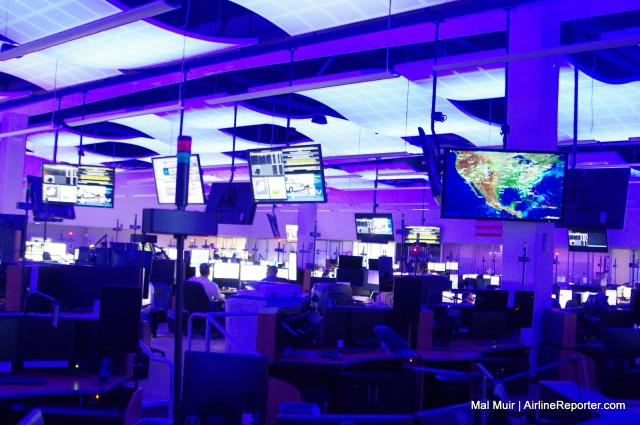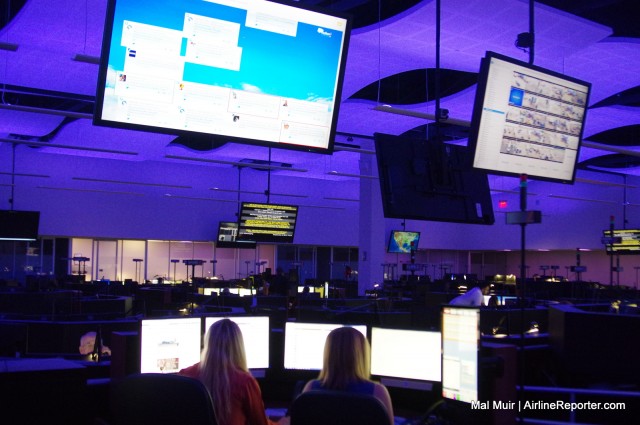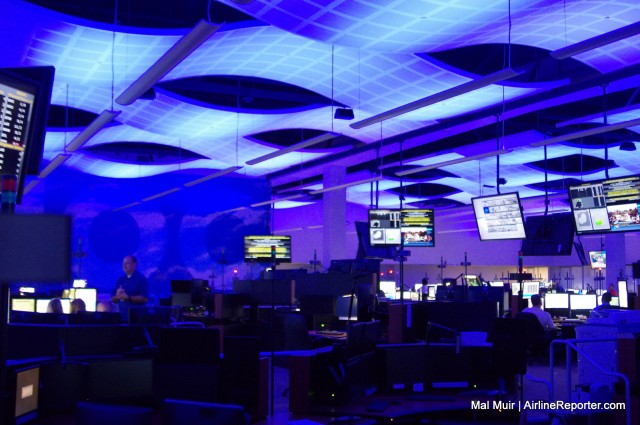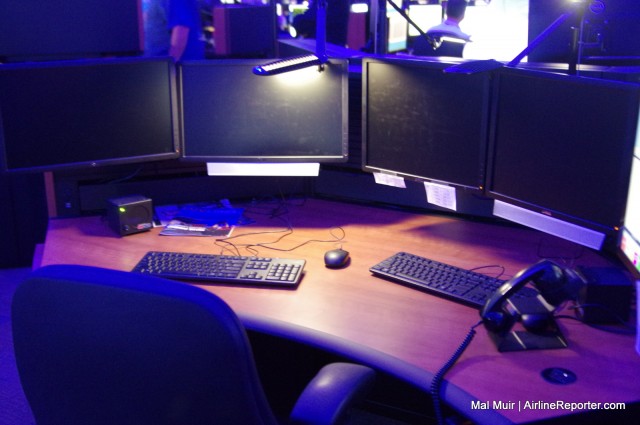In May of this year, Southwest Airlines unveiled a new crown jewel at their Dallas Love Field headquarters: their Network Operations Control (NOC). If the employees are the heart of the airline, the brain that keeps the airline moving day in and day out is the NOC.
During Media Day, we were given a tour of the NOC — it almost felt like being in Batman’s lair.
The NOC is the operational brain of the airline. It is here that the airline controls all the moving pieces that get passengers from point A to point B safely and, hopefully, on time.
But the NOC is more than just a bunch of computers. Before we even entered the NOC itself, we headed to a room that overlooks the facility; it felt like a “situation room.” This room was surrounded by flat screen monitors along the roof line, each displaying different information covering statistics on the day’s operations, fleet availability, airport advisory messages, even webcams from each of the gates at some of the airline’s hub cities.
All the information is easily displayed so that NOC staff can take a quick glance and know how the airline is operating. The situation room is used twice a day for briefings with the management team and staff.
My favorite piece of the room was the full-sized wall display showing all of Southwest’s aircraft on a map of the USA. Amazing to see how large their fleet is.
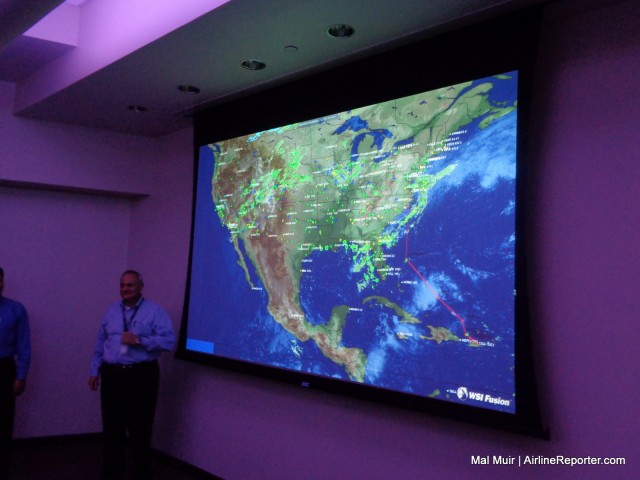
All of Southwest’s flights on the one screen, overlayed with a weather map, so they see how their fleet is doing at any single moment.
There is a diverse set of staff that work inside the NOC. Although the NOC can handle 276 people, typically there are about 150 at any one time in the room to make it a one-stop-shop operation.
You have dispatchers, air traffic control specialists, and superintendent dispatchers (these are the people who make the day-to-day decisions on the flights, like if a flight gets held). There is also crew scheduling, flight operations, ground operations, safety & security, maintenance, and an in-house weather team. On top of all of that, you have the top-tier decision makers you would find like the Chief of the Network, Chief Pilot, and more.
There are still some AirTran team members working working out of the NOC, but their team will slowly shrink as the airline draws down.
Southwest’s social care team even has an a mini “Listening Center” in the NOC, so if your flight is stuck on the ground, they can see and interact with your Tweets and other messages.
The NOC staff work three shifts per day, around the clock. With 24/7 staffing, they can ensure that the there is someone there from first to last flight. But those staff go through quite a bit of training before they can even get out on the floor.
Before becoming a dispatcher for Southwest, you need to already have your FAA license and two years of experience with another airline. Add on the Southwest-specific training and it can be another year from the day you’re hired to hitting the floor. A long time — but the jobs are important and require the expertise!
The unique look of the NOC is not just for aesthetics (but it does look pretty, wouldn’t you agree?) but also the design has been scientifically researched. The blue shade for the lighting is used to create a better mood and it reduces eye strain after long hours staring at one of the many computer monitors.
All of the desks are ’œsit-stand’ ergonomic desks, so if you feel the need to stand up and stretch your legs, well, your desk comes with you.
The design of the roof also has a specific rationale. It was created to help isolate sound, which means you can work in an environment that is conducive to what you need to hear. Considering that dispatchers may need to hear important details, the less amount of ambient noise the better.
Of course this is the middle of northern Texas; on the day we were there, temperatures outside were pretty toasty, but inside it was a pleasant 72-74F. But that outside temperature isn’t the only bit of weather you would be worried about. Tornadoes can be common in Texas, and since this is the brain that controls Southwest’s heart, they want to make sure that they are prepared.
The building was built to withstand an EF3 tornado. Should that ever occur, the airline staff would be safe. They have power systems and generators to ensure power is continuous. But even if the NOC has to shut down, Southwest has multi-layer backup plans, including a hidden-away replica facility that could take over and keep the airline running.
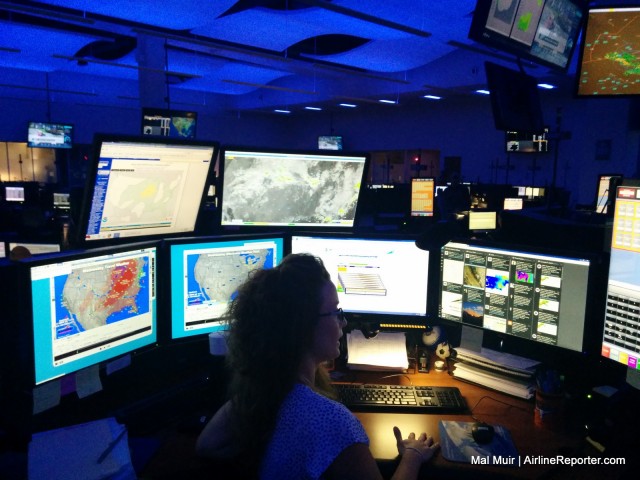
Southwest’s in-house weather department in the NOC. That screen on the right is a Tweetdeck feed with a whole lot of weather advisory information.
It was a great experience to get in behind the scenes of an airline. I got in to an area that is not normally seen and rarely thought about. This opportunity really pushed home that there is so much behind-the-scenes work that helps a flight get from A to B, and that somewhere in the depths of a building in a blue-tinted room, people are working to get me home with as little fuss as possible.
